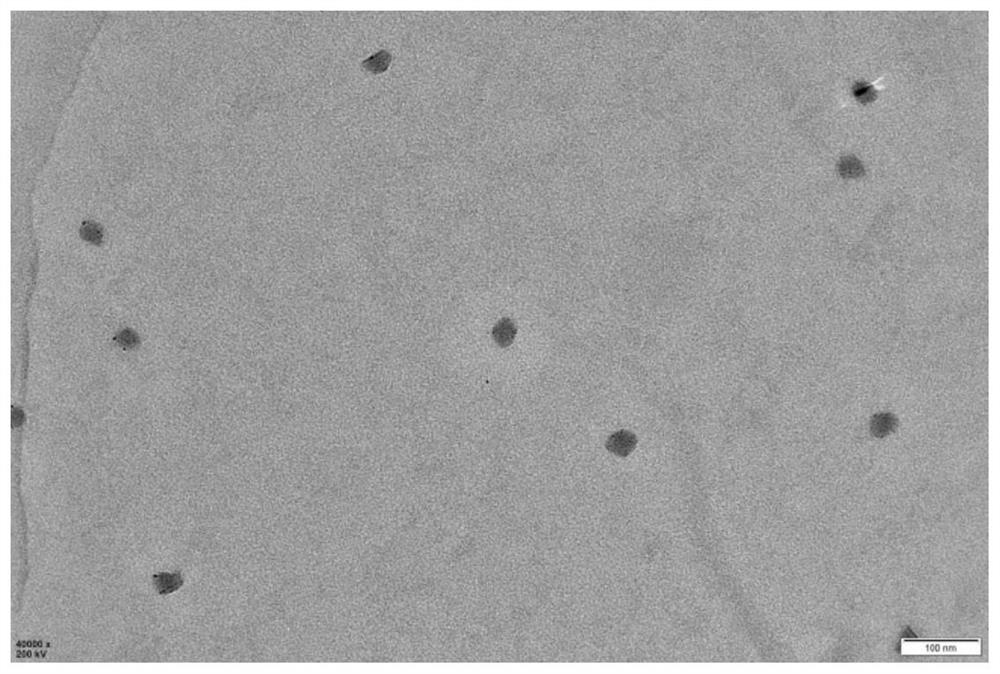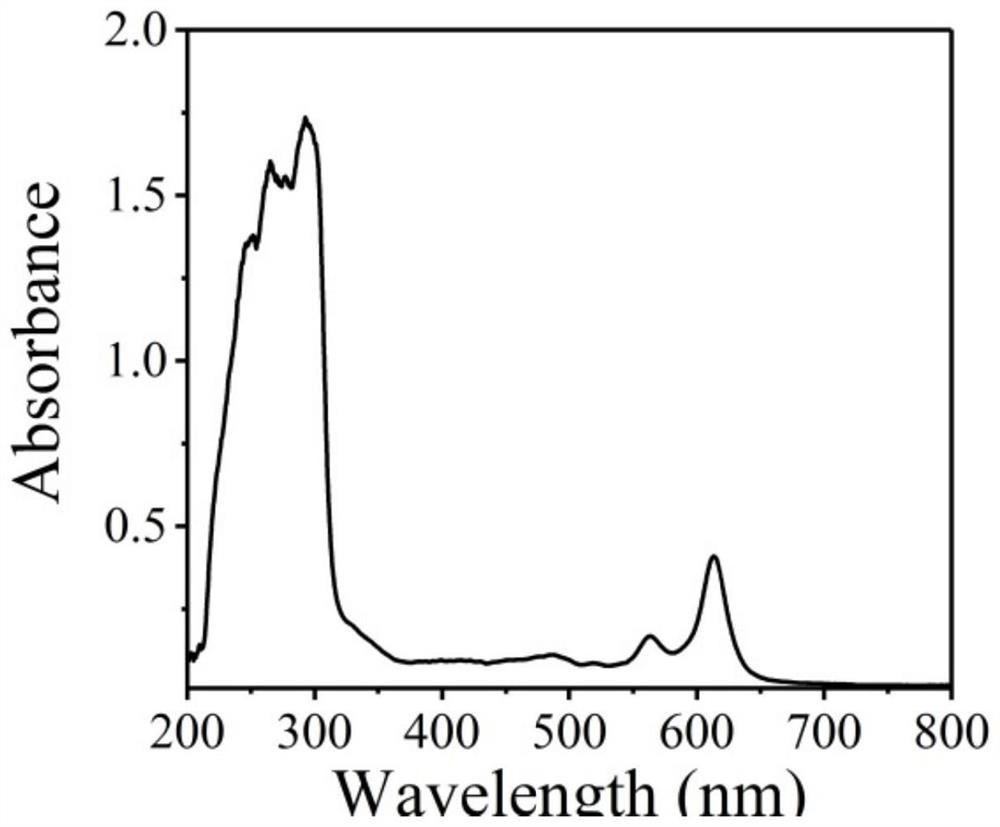Preparation and application of carbon dot test paper for detecting gaseous singlet oxygen
A technology of singlet oxygen and carbon dots, which is applied in the field of analysis and detection, can solve the problems of singlet oxygen limitations, etc., and achieve the effects of easy detection, reduced detection equipment cost, and easy portability
- Summary
- Abstract
- Description
- Claims
- Application Information
AI Technical Summary
Problems solved by technology
Method used
Image
Examples
Embodiment 1
[0035] Mix 0.1mol / L o-phenylenediamine and 0.05mol / L catechol aqueous solution evenly, add 0.1mol / L phosphoric acid, and transfer the mixed solution to a 25mL reaction kettle after ultrasonication for 10min. Raise the temperature to 180°C in an oven and keep it warm for 6h. After the reaction kettle was cooled to room temperature, the crude product obtained by carbonization was dissolved in ultrapure water, and a purified carbon dot solution was obtained after centrifugation at 10,000 rpm for 20 min. Absorbent paper is added to the carbon dot aqueous solution, and after drying, the carbon dot test paper is obtained.
[0036] The morphology of carbon dots was observed by transmission electron microscope. Such as figure 2 As shown, the obtained carbon dot particles are uniformly dispersed, and the average particle diameter is 14.05nm.
[0037] Utilize the ultraviolet-visible spectrophotometer to carry out ultraviolet spectrum test to the prepared carbon dot, the result is as...
Embodiment 2
[0044]Mix 0.2mol / L m-phenylenediamine and 0.1mol / L resorcinol aqueous solution evenly, add 0.5mol / L phosphoric acid, and transfer the mixed solution to a 25mL reaction kettle after ultrasonication for 10min. Raise the temperature to 180°C in an oven and keep it warm for 4h. After the reactor was cooled to room temperature, the crude product obtained by carbonization was dissolved in ultrapure water and dialyzed with a 3500 Da dialysis bag for 48 hours to remove unreacted small molecules. Finally, a purified carbon dot solution is obtained. Absorbent paper is added to the carbon dot aqueous solution, and after drying, the carbon dot test paper is obtained.
[0045] Using the method of Example 1 to detect the carbon point test paper prepared in this example, when the gaseous singlet oxygen was introduced, the prepared carbon point test paper had obvious red spots, indicating that the carbon point test paper can be used to detect gaseous singlet oxygen. .
Embodiment 3
[0047] Mix 0.5mol / L p-phenylenediamine and 1.0mol / L hydroquinone aqueous solution evenly, add 0.2mol / L phosphoric acid, and transfer the mixed solution to a 25mL reaction kettle after ultrasonication for 10min. Raise the temperature to 140°C in an oven and keep it warm for 8h. After the reactor was cooled to room temperature, the crude product obtained by carbonization was dissolved in ultrapure water, and a purified carbon dot solution was obtained after centrifugation at 12000 rpm for 10 min. Absorbent paper is added to the carbon dot aqueous solution, and after drying, the carbon dot test paper is obtained.
[0048] Using the method of Example 1 to detect the carbon point test paper prepared in this example, when the gaseous singlet oxygen was introduced, the prepared carbon point test paper had obvious red spots, indicating that the carbon point test paper can be used to detect gaseous singlet oxygen. .
PUM
| Property | Measurement | Unit |
|---|---|---|
| The average particle size | aaaaa | aaaaa |
| Maximum emission wavelength | aaaaa | aaaaa |
| Half width | aaaaa | aaaaa |
Abstract
Description
Claims
Application Information
 Login to View More
Login to View More - R&D
- Intellectual Property
- Life Sciences
- Materials
- Tech Scout
- Unparalleled Data Quality
- Higher Quality Content
- 60% Fewer Hallucinations
Browse by: Latest US Patents, China's latest patents, Technical Efficacy Thesaurus, Application Domain, Technology Topic, Popular Technical Reports.
© 2025 PatSnap. All rights reserved.Legal|Privacy policy|Modern Slavery Act Transparency Statement|Sitemap|About US| Contact US: help@patsnap.com



